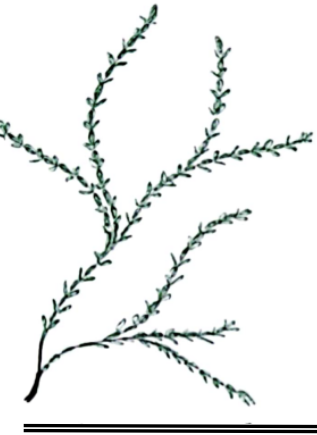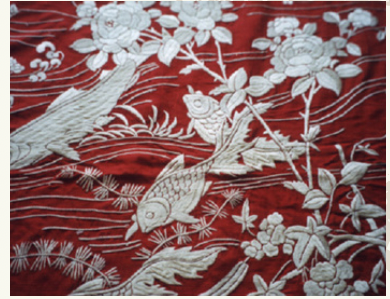Convenors: Shubranshu Mishra and Nandini Chatterjee
Date/time: Select Wednesdays (see under sessions), 5-6 pm
We are running a 8-part reading and discussion group exploring the implications and suitability of the concept of decoloniality for South Asia. If you would like to participate, please write to n.chatterjee@exeter.ac.uk for a Zoom link.
Session 1: Decoloniality or Postcoloniality?
5 October 2022
Chair: Shubranshu Mishra
What is decolonisation/decoloniality? What is the genealogy of this term/model/praxis, and how and when did it diverge from postcolonial studies or theory? What is the disciplinary difference between the two? How do they approach the questions of power and epistemic violence? What are the limits of decolonising? What are the dangers of co-option and the critiques in the South Asian context?
Key reading:
Mignolo, Walter D., and Catherine E. Walsh. On decoloniality: Concepts, analytics, praxis. Duke University Press, 2018. (selections)
Additional:
- Quijano, Aníbal. “Coloniality and modernity/rationality.” Cultural studies 21, no. 2-3 (2007): 168-178.
- Santos, Boaventura de Sousa (ed). Another knowledge is possible: Beyond northern epistemologies, London: Verso, 2007.
- Bhambra, Gurminder K. “Postcolonial and decolonial dialogues.” Postcolonial studies 17, no. 2 (2014): 115-121.
- Gopal, Priyamvada. “On decolonisation and the university.” Textual Practice 35, no. 6 (2021): 873-899.
- Khanna, Neetu. The visceral logics of decolonization. Duke University Press, 2020.
Presenter:
Reporter:
Session 2 Cast(e)ing South Asia
9 November
One possible way of decentring the moments of political liberation of South Asian nation-states is by paying attention to the oppressive hierarchies, often entrenched, if not created by processes of colonial rule, continue to structure lives and prospects. For example, how has the Nationalist and the Subaltern Historiography in South Asia invisibilised the category of caste? Can race and caste be discussed together, as Wilkerson puts it, ‘Caste is the bones, race the skin’? How can we address the proximity between whiteness and Brahminism / White and Savarna Feminism? How do hierarchical categories such as qaum/zaat/ biraderi ensure the perpetuity of casteism beyond Hinduism and across South Asia?
Chair: tbc
Key Readings:
Wilkerson, Isabel. Caste: The origins of our discontents. Random House, 2020.
Jangam, Chinnaiah. “A Dalit Paradigm: A new narrative in South Asian historiography.” Modern Asian Studies 50, no. 1 (2016): 399-414.
Also, Shankar, Shobana. An Uneasy Embrace: Africa, India and the Spectre of Race. Oxford University Press, 2021.
Additional:
- Gazdar, Haris. “Class, caste or race: veils over social oppression in Pakistan.” Economic and Political Weekly (2007): 86-88.
- Asif, Ghazal. “Jogendranath Mandal and the politics of Dalit recognition in Pakistan.” South Asia: Journal of South Asian Studies 43, no. 1 (2020): 119-135.
- Pan, Anandita. “Embracing difference: Towards a standpoint praxis in Dalit feminism.” South Asian Review 40, no. 1-2 (2019): 34-50.
- Rege, Sharmila. “Dalit women talk differently: A critique of ‘difference’and towards a Dalit feminist standpoint position.” Economic and Political Weekly (1998): WS39-WS46.
- Omvedt, Gail. Dalit visions: The anti-caste movement and the construction of an Indian identity. Orient Blackswan, 2006.
- Jayawardene, Sureshi M. “Racialized casteism: Exposing the relationship between race, caste, and colorism through the experiences of Africana people in India and Sri Lanka.” Journal of African American Studies 20, no. 3 (2016): 323-345.
- Paik, Shailaja. “Forging a new Dalit womanhood in colonial Western India: Discourse on modernity, rights, education, and emancipation.” Journal of Women’s History 28, no. 4 (2016): 14-40.
- Guru, Gopal, “The Politics of Naming,” Seminar 471, ‘Dalit’, November 1998, pp. 14-
Session 3 Queering South Asia
30 November
How can queer theory help us understand South Asia beyond a ‘diversity’ angle? How do Hindutva groups appropriate queerness to advance their ‘Islamophobic, casteist, and homohindunationalist agendas’? How does the Indian trans movement’s ‘desire for backward class status’ complicate our understanding of social justice and caste/social hierarchy?
Chair: tbc
Key Readings:
Upadhyay, Nishant. “Hindu nation and its queers: caste, Islamophobia, and de/coloniality in India.” Interventions 22, no. 4 (2020): 464-480.
Rao, Rahul. Out of time: The queer politics of postcoloniality. Oxford University Press, 2020. (Selection: The Nation and Its Queers)
Additional:
Puar, Jasbir. “Rethinking homonationalism.” International Journal of Middle East Studies 45, no. 2 (2013): 336-339.
Session 4 Developing South Asia
11 January
Understanding the damages and sustained violence inflicted by post-colonial nation-states on their populace through projects of developmentalism and biopolitics – whether invading people’s bodies through invasive biometric/regulatory programmes or destroying their habitat through development corridors – is key to decolonising South Asia. With the grossly unequal effects of climate change in different parts and social sections of South Asia, environmental humanism has a role to play. This discussion will foreground issues of poverty, land alienation, agrarian crisis & endangered livelihoods in the face of industrialisation/land grabs and climate change. Further, through a critique of ‘master plans’, we will explore how the expansion of cities to the adjoining rural areas and the (forced) migration from rural to urban impact the distinction between urban studies and rural studies. Further, how could development/inclusive growth be imagined in terms of social justice within a caste society? Can development be theorised differently – how have the southern states of India, especially Tamil Nadu, managed to link economic development with social inclusivity?
Chair: tbc
Key Readings:
Kalaiyarasan, A., A. Kalaiyarasan, and M. Vijayabaskar. The Dravidian model: Interpreting the political economy of Tamil Nadu. Cambridge University Press, 2021.
Pati, Sushmita. Properties of Rent: Community, Capital and Politics in Globalising Delhi. Cambridge University Press, 2021.
Additional:
Sainath, Palagummi. Everybody loves a good drought: stories from India’s poorest districts. Vol. 10. Penguin Books India, 1996.
Session 5 Securing South Asia
8 February
This would be a space to discuss how enormous zones of nationality struggles, cessation, and occupations within South Asia have been excluded from and by liberal narratives in the name of security. How does one conceive of Kashmir beyond the nation-state paradigm? Where do the borders lie between Assam and Bangladesh; Khyber-Pakhtunkhwa and Afghanistan? How are the ideas of self-determination, azaadi, etc shaped through the everyday experiences of living under military occupation?
Chair: Amina Yaqin
Key Reading:
Rumours of Spring: A Girlhood in Kashmir by Farah Bashir
Home fire by Kamila Shamsie
Additional:
Akhtar, Aasim Sajjad. “Balochistan versus Pakistan.” Economic and Political weekly (2007): 73-79.
Sherin, B. S., and Susie Tharu. Gendering minorities: Muslim women and the politics of modernity. Orient BlackSwan, 2021.
Session 6 Citizenship
8 March
This session would be an exploration of the possibilities and impossibilities of political belonging and participation in postcolonial South Asian nations. It would also be a time to think about the ways in which people create and disrupt the nation as a political unit – whether actively through their movements, or inherently, through their religious or other subjectivities. This can perhaps offer a space to imagine other kinds of political communities.
Chair:
Key readings:
https://www.cambridge.org/core/journals/itinerario/article/histories-of-indian-citizenship-in-the-age-of-decolonisation/0917637777105218875BD237C2DACF2B Review essay but really interesting
Sur, Malini. Jungle passports: Fences, mobility, and citizenship at the Northeast India-Bangladesh border. University of Pennsylvania Press, 2021.
Kapoor, Ria. Making refugees in India. Oxford University Press, 2021.
Iqtidar, Humeira. “State management of religion in Pakistan and dilemmas of citizenship.” Citizenship Studies 16, no. 8 (2012): 1013-1028.
OR
Qasmi, Ali Usman. The Ahmadis and the politics of religious exclusion in Pakistan. Anthem Press, 2015.
Mookherjee, Nayanika. “The “Dead and Their Double Duties” Mourning, Melancholia, and the Martyred Intellectual Memorials in Bangladesh.” Space and Culture 10, no. 2 (2007): 271-291.
Additional
Tejani, Shabnum. “Cow Protection, Hindu Identity and the Politics of Hurt in India, c. 1890–2019.” Emotions: History, Culture, Society 3, no. 1 (2019): 136-157.
Fazal, Tanweer. “Minorities and their nationalism (s): the terms of a discourse in South Asia.” South Asian History and Culture 3, no. 2 (2012): 163-176.
Tejani, Shabnum. “The necessary conditions for democracy: BR Ambedkar on nationalism, minorities and Pakistan.” Economic and Political Weekly (2013): 111-119.
Session 7 Decolonising Partition narratives
Date: tbc
Chair: tbc
Who is the ‘other’ in the popular history of Partition? How have the neoliberal technologies impacted the ways in which Partition narratives and trauma are told, and ‘made accessible’?
Key Readings:
Pippa Virdee (2022) Histories and Memories in the Digital Age of Partition Studies, The Oral History Review, 49:2, 328-345
Anchal Malhotra’s two books: Remnants of a Separation : A History of the Partition through Material Memory and Remnants of Partition: 21 Objects from a Continent Divided
Kaur, Ravinder. “Curating the wound: The public memory of partition remains woefully caste-blind.” The Caravan (2017). Also Butalia’s chapter on Maya in The Other Side of Silence.
Jesús F. Cháirez-Garza (2019) B.R. Ambedkar, Partition and the Internationalisation of Untouchability, 1939–47, South Asia: Journal of South Asian Studies, 42:1, 80-96
Presenter:
Reporter:
Session 8 Decolonising Cinema in South Asia
Date: tbc
Chair: tbc
How does cinema act as an important register to understand the region – its history and contemporary experience – as well as the representation of the most marginalised? How has new cinema constrained and redefined this experience? The discussion intends to go beyond the dominant Bollywood cinema while unpacking its Hindi Hindu Hindustan undertones.
Key Readings:
Edachira, Manju. “Anti-caste Aesthetics and Dalit Interventions in Indian Cinema.” Economic and Political Weekly 55, no. 38 (2020): 47-53.
Qureshi, Bilal. “The Veiled Avengers of Pakistan’s Streaming New Wave.” Film Quarterly 74, no. 3 (2021): 66-70.
Yengde, Suraj. ‘Dalit Cinema’, South Asia: Journal of South Asian Studies 41, no. 3 (2018): 503-518
Additional:
Hoek, Lotte. “Mirrors of movement: Aina, Afzal Chowdhury’s cinematography and the interlinked histories of cinema in Pakistan and Bangladesh.” Screen 57, no. 4 (2016): 488-495.
Velayutham, Selvaraj. Tamil cinema: The cultural politics of India’s other film industry. Routledge, 2008.
Ahmad, Ali Nobil. “Film and cinephilia in Pakistan: Beyond life and death.” BioScope: South Asian Screen Studies 5, no. 2 (2014): 81-98.
Gopinath, Gayatri, ‘Queering Bollywood’, Journal of Homosexuality, 39:3-4, 2000, 283- 297.
Kumar, Sanjeev, ‘Constructing the Nation’s Enemy: Hindutva, popular culture and the Muslim ‘other’ in Bollywood cinema’, Third World Quarterly, 34:3, (2013) 458-469

